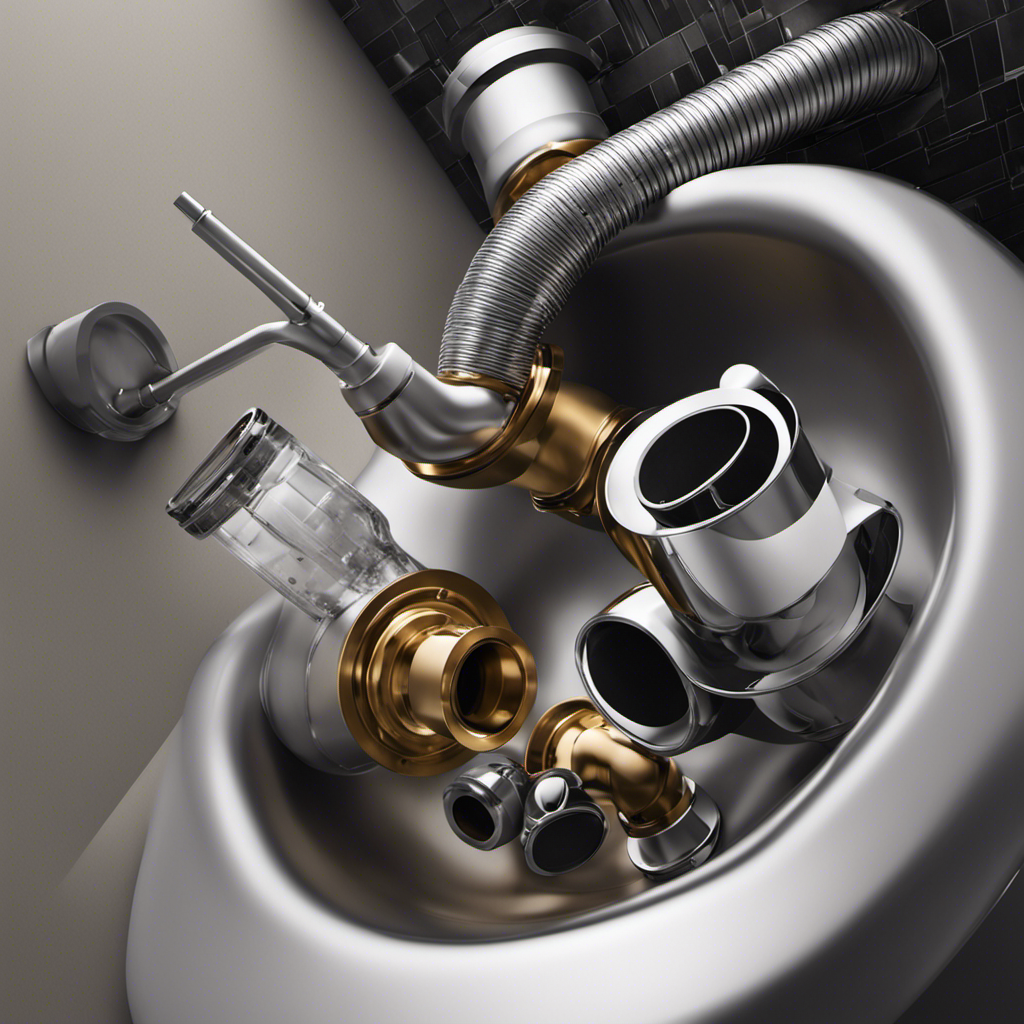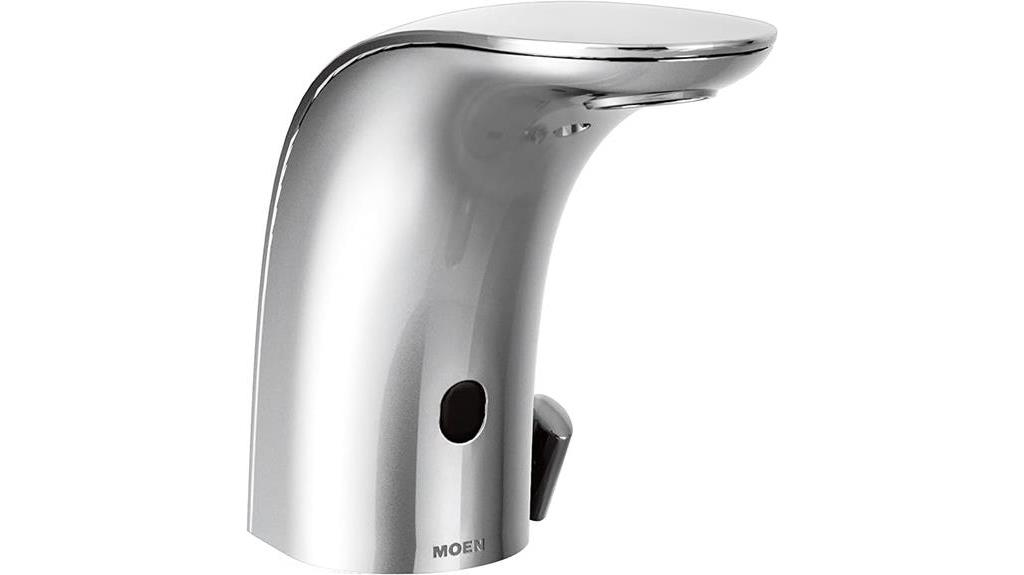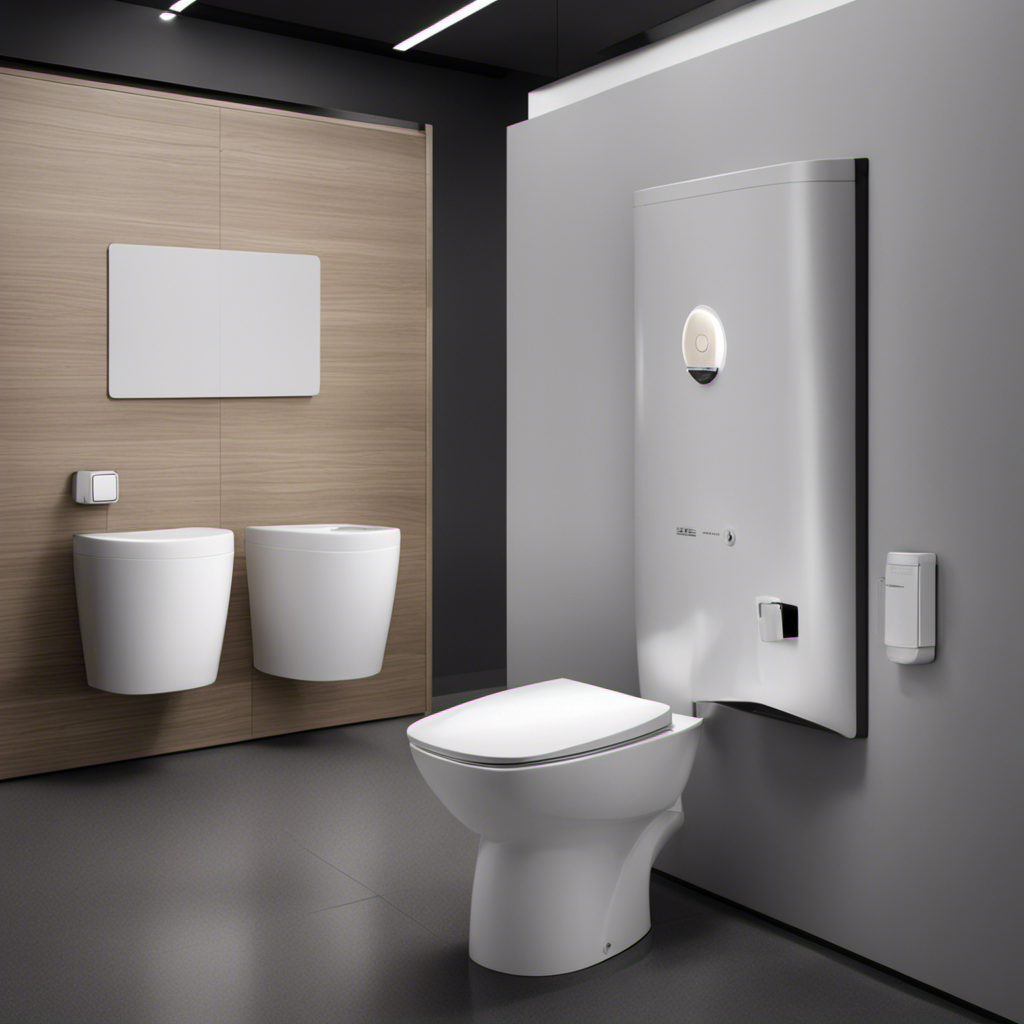Are you remodeling your bathroom and wondering what size pipe to use for your toilet drain?
Imagine this: you’ve installed a beautiful new toilet, but the wrong size pipe causes constant clogs and backups.
Don’t worry, we’re here to help. In this article, we’ll guide you through understanding drain pipe sizes, factors to consider when choosing a toilet drain pipe size, and provide sizing guidelines for both residential and commercial toilet drain systems.
With our knowledge and tips, you’ll be able to properly install a toilet drain pipe that will keep your bathroom running smoothly.
Key Takeaways
- Drain pipes are typically made from materials such as PVC, cast iron, or ABS.
- Larger drain pipe sizes allow for better water flow and prevent clogs and backups.
- Proper pipe diameter selection is crucial for efficient functioning of the toilet system.
- The most common pipe sizes for toilet drains are 3 inches and 4 inches.
Understanding Drain Pipe Sizes
To understand drain pipe sizes, you’ll need to know the different measurements used in plumbing.
When it comes to drain pipes, they are typically made from various materials such as PVC, cast iron, or ABS. Each material has its own advantages and disadvantages, so it’s essential to choose the right one for your needs.
Moving on to the size of the drain pipe, it is crucial to consider the benefits of larger sizes.
Larger drain pipes allow for better water flow, reducing the chances of clogging and backups. They also help in preventing sewer gases from entering your home.
Moreover, larger drain pipe sizes are more durable and can handle increased water volume, making them ideal for high-demand areas.
Factors to Consider When Choosing a Toilet Drain Pipe Size
When choosing a toilet drain pipe size, there are several key factors to consider.
First, you need to determine the optimal pipe diameter for your specific needs. This will depend on the flow rate considerations and the available space for installation.
Optimal Pipe Diameter
You should use a pipe with the optimal diameter for your toilet drain. Proper pipe diameter selection is crucial to ensure the efficient functioning of your toilet system. When choosing the pipe diameter, it is essential to consider the toilet drain capacity. The pipe should be able to handle the maximum flow rate of water and waste from the toilet without any blockages or backups. A pipe that is too small may cause clogs and reduce the flow rate, while a pipe that is too large may lead to slow drainage and stagnant water.
To determine the optimal pipe diameter for your toilet drain, you need to calculate the flow rate of your toilet. This can be done by considering the flush volume and the time it takes for the water to evacuate the bowl. Once you have this information, you can consult plumbing codes and standards to find the recommended pipe diameter for your toilet drain capacity.
Now that you understand the importance of pipe diameter selection and toilet drain capacity, let’s move on to the next consideration: flow rate considerations.
Flow Rate Considerations
Calculating the flow rate of water and waste is crucial when determining the optimal diameter for a toilet system. To ensure efficient and effective plumbing, it is important to consider flow rate limitations and their impact on the overall system.
Here are four key factors to consider:
-
Pipe Diameter: The diameter of the toilet drain pipe affects the flow rate. A larger diameter allows for a higher flow rate, reducing the risk of clogs and backups.
-
Toilet Design: Different toilet models have varying flow rates. Low-flow toilets, for example, have a reduced flow rate to conserve water.
-
Water Pressure: Adequate water pressure is necessary for an optimal flow rate. Insufficient pressure can result in slow draining and potential blockages.
-
Plumbing Layout: The layout of the plumbing system, including the distance and number of bends in the pipe, can impact the flow rate.
Space and Installation
To maximize space and ensure a smooth installation, it’s important to consider the dimensions and layout of your plumbing system.
When it comes to installing a toilet drain, you need to be aware of the available installation techniques and pipe materials.
The installation technique you choose will depend on the specific requirements of your space and the available options.
There are various pipe materials to choose from, such as PVC, ABS, and cast iron.
PVC pipes are commonly used due to their affordability, durability, and ease of installation.
ABS pipes are another popular choice as they are resistant to chemicals and offer excellent flow characteristics.
Cast iron pipes, although more expensive, are known for their longevity and soundproofing properties.
Common Pipe Sizes for Toilet Drains
The most common pipe sizes for toilet drains are 3 inches and 4 inches. When it comes to ensuring proper drainage slope and toilet flange installation, choosing the right pipe size is crucial. Here’s why:
-
Drainage slope: A larger pipe diameter allows for better slope, which helps in the efficient removal of waste from the toilet. This prevents clogs and ensures smooth drainage.
-
Flow capacity: A larger pipe size can handle a higher flow capacity, reducing the chances of blockages and backups.
-
Installation ease: 3-inch and 4-inch pipes are readily available and widely used, making them easier to install and replace when needed.
-
Compatibility: Many toilet flanges are designed to fit 3-inch and 4-inch pipes, ensuring a secure and leak-free connection to the drain system.
Now that you understand the importance of pipe size for toilet drains, let’s move on to the next step: measuring your existing toilet drain pipe.
How to Measure Your Existing Toilet Drain Pipe
To ensure you choose the correct size for your toilet drain pipe, you need to accurately measure your existing pipe. Measuring techniques can vary depending on the type of pipe you have, but there are some universal troubleshooting tips you can follow.
First, gather the necessary tools: a tape measure, a flashlight, and a notepad. Then, carefully inspect your existing pipe, noting its diameter and length. Use the tape measure to measure the diameter of the pipe, which is the distance across the circular opening. Next, measure the length of the pipe, from one end to the other.
Sizing Guidelines for Residential Toilet Drain Pipes
Make sure you follow these guidelines when determining the appropriate dimensions for your residential toilet drain.
Having the correct size pipe is crucial for proper functioning of your toilet and preventing any drainage issues. Here are some key points to consider:
-
Pipe size: The standard size for residential toilet drain pipes is 3 inches in diameter. This allows for efficient waste removal and prevents clogging.
-
Drain pipe materials: When choosing the materials for your toilet drain pipe, opt for durable and corrosion-resistant options like PVC or ABS. These materials are commonly used in residential plumbing due to their longevity and ease of installation.
-
DIY toilet installation: If you’re planning to install the toilet yourself, ensure that you have the necessary tools and equipment. This includes pipe cutters, fittings, and adhesive for securing the drain pipe connections.
-
Local building codes: Always check your local building codes and regulations before proceeding with the installation. This will ensure that your toilet drain meets the required standards and avoids any potential legal issues.
Following these guidelines will help you determine the appropriate dimensions for your residential toilet drain and ensure a smooth DIY installation process.
Recommended Pipe Sizes for Commercial Toilet Drain Systems
When considering commercial toilet drain systems, it’s important to choose the appropriate pipe size for efficient waste removal and prevention of clogging. For commercial applications, larger pipe sizes are typically recommended to accommodate the higher volume of waste. The most commonly used pipe sizes for commercial toilet drain systems are 3-inch and 4-inch diameter pipes.
These larger pipe sizes allow for faster flow and reduce the risk of blockages caused by solid waste or toilet paper. It is also important to use recommended materials, such as PVC or ABS pipes, which are durable and resistant to corrosion.
To ensure proper functioning of the drain system, regular maintenance is essential. This includes periodic inspections, cleaning, and removing any debris or buildup that may cause clogs.
By following these recommendations and implementing proper maintenance tips, you can ensure the efficient operation of your commercial toilet drain system.
Now, let’s move on to the next section to learn some tips for properly installing a toilet drain pipe.
Tips for Properly Installing a Toilet Drain Pipe
Properly installing a toilet drain pipe involves ensuring secure connections and using the appropriate materials for long-lasting performance. Here are some tips to help you with the installation process:
-
Choosing materials: It’s important to select the right materials for your toilet drain pipe. Opt for durable materials like PVC or ABS, which are resistant to corrosion and provide a smooth flow of waste.
-
Proper slope: The toilet drain pipe should have a proper slope to ensure efficient drainage. The standard slope is 1/4 inch per foot, which allows for proper waste flow without any blockages or backups.
-
Secure connections: Make sure to securely connect the toilet drain pipe to the main sewer line or septic tank. Use proper fittings and adhesive to create a watertight seal, preventing any leaks or odors.
-
Inspect and test: Once the installation is complete, thoroughly inspect the toilet drain pipe for any damages or leaks. Test the system by flushing water and check for proper drainage.
Conclusion
So, there you have it. Now that you understand the importance of choosing the right size pipe for your toilet drain, you can make an informed decision.
Remember, the size of the pipe will depend on various factors such as the number of fixtures in your bathroom and the distance between your toilet and the main sewer line.
By measuring your existing drain pipe and following the recommended guidelines, you can ensure a proper installation.
Just like fitting together the pieces of a puzzle, finding the perfect pipe size will create a seamless and efficient drainage system for your toilet.










